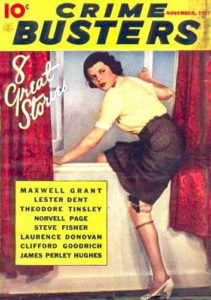 Street & Smith kicked off the hero pulp trend with The Shadow in 1931. They eventually followed that with Doc Savage in 1933. While those were successful, their subsequent series were not, as they tried western (Pete Rice), detective (Nick Carter), and air adventures (Bill Barnes).
Street & Smith kicked off the hero pulp trend with The Shadow in 1931. They eventually followed that with Doc Savage in 1933. While those were successful, their subsequent series were not, as they tried western (Pete Rice), detective (Nick Carter), and air adventures (Bill Barnes).
Next they tried to copy the success of The Shadow and Doc with The Whisperer and The Skipper, respectively.
Walter Gibson suggested something different. A pulp magazine that would contain about three novelettes (long short stories) of different serial pulp heroes, from which successful ones could be spun out in their own magazines. Editor John Nanovic decided to go with that idea, but made some changes (probably not for the best).
In 1937, they dumped The Whisperer and The Skipper, and retitled Best Detective Magazine (which was mainly reprints) as Crime Busters.
As planned, each issue of Crime Busters would have several serial characters. However, unlike what Gibson suggested, instead of three or four novelettes, there would be something like seven short-story serials per issue, with 8 stories overall. Not long enough to get readers really interested in a particular character. And there was no consistency for if a character would appear, as the same characters where not in each issue.
Crime Busters lasted two years, with the number of serial characters in each issue ranging from seven at the start to five at the end (the magazine was filled out with standalone stories). I was surprised to learn a few series actually came over from other magazines S&S had canceled: The Feds and The Whisperer. After two years the magazine was renamed Street & Smith Mystery Magazine. It would last about four years with that title, probably killed off by the paper shortage, but before a year was out with the new title, it went to bimonthly. Over time the number of serialized characters in each issue would decrease from four to just one toward the end.
I also wonder if the cover style might also have affected sales. For the first seven issues of Crime Busters, they went with a color photo of a “damsel in distress” that frankly seemed more appropriate to a “true confessions” magazine than a hero pulp mag. It was about a year before we got covers more appropriate to that genre. Mystery Magazine‘s covers weren’t an improvement, going with a style where the artwork was reduced to about two-thirds of the cover, the rest filled up with a solid color and text. Mystery Magazine also had the byline of having “unusual detective stories.”
Now, about those serial characters. Frankly, Crime Busters reads like a “who’s who” of hero-pulp authors. We would get stuff from Gibson, Lester Dent, Norvell Page, Theodore Tinsley, Steve Fisher, Laurence Donovan, Clifford Goodrich (?), and James Perley Hughes just in the first issue! Many others would join over time like Alan Hathaway, Wyatt Blassingame, Paul Ernst, Frank Gruber, Arthur J. Burks, and more.
Depending on how you count them, there were about 30 serial characters that ran at least one story in Crime Busters/Mystery Mag. Seven got more than 10 stories. Of those, I’ve mentioned a few in the past.
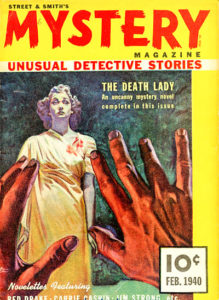 The longest was Theodore Tinsley’s Carrie Cashin, a female detective for the Cash and Carry Detective Agency. Clocking in at 39 stories, these were apparently humorous stories of this female detective. Supposedly some of the early photo covers featured Carrie. This was followed by Walter Gibson, again writing under the Maxwell Grant house name, with 23 stories featuring Norgil the Magician. This was yet another in a long line of “magician detectives,” appropriate for Gibson with his magic background.
The longest was Theodore Tinsley’s Carrie Cashin, a female detective for the Cash and Carry Detective Agency. Clocking in at 39 stories, these were apparently humorous stories of this female detective. Supposedly some of the early photo covers featured Carrie. This was followed by Walter Gibson, again writing under the Maxwell Grant house name, with 23 stories featuring Norgil the Magician. This was yet another in a long line of “magician detectives,” appropriate for Gibson with his magic background.
Next up with 20 stories is Jim Strong by Frank Gruber. This series actually came over from The Whisperer after 4 stories in 1937 when that magazine ended.
Two series had 18 stories. Lester Dent, writing under his real name, did Click Rush the Gadget Man, which I’ve posted on before. The other is Doc Trouble, written by a Robert C. Blackmon, about a physician who solves crimes. W.T. Ballard did Red Drake for 17 stories, a character who was a racetrack detective.
And then Norvell Page (yes, the guy who did The Spider) did The Death Angel for 11 stories. Before he did The Death Angel, he was in the first issue with another serial character, Dick Barrett, who lasted but five stories. Barrett is a former cop now working for insurance companies to recover stolen jewels. The Death Angel was a prissy, effete prizefighter who wore a top hat and tails. His nickname was due to accidentally killing a man in the ring.
Now, there were a many others. It seemed several were different types of detectives: railway (Boxcar Reilly by Laurence Donovan), postal (Bimbo and Howdy, also by Donovan), former boxers turned detectives (Ed Stone, The Death Angel), and other detectives like Cass Manning of the homicide squad.
Red Brennan of Naval Intelligence (written by Steve Fisher, creator of Sheridan Doome) was another series that came from The Feds. Fisher also did The Spinner, a plainclothes cop who doesn’t carry a gun but instead hits bad guys and sends them spinning. Charles Q. Logan is a trouble shooter for the movie industry. Alan Hathaway had The Keyhole, a newspaper columnist who helps the poor.
There were two pulp heroes that appeared explicitly in Crime Busters to see if they could get their own magazines (back). The Whisperer and The Skipper, which had both been canceled prior to launching Crime Busters and since relegated to backup status in The Shadow and Doc Savage pulps, were each given novellas in Crime Busters to see if there was enough interest in bringing them back. I guess it worked for The Whisperer, because he did get back his own magazine, though it happened over a year later. Further, two unpublished Skipper novels were re-written and shorten into non-Skipper stories that ran in Crime Busters in 1941 and ’42. A similar fate happened to a leftover Whisperer novel, but it appeared in Clues in 1941, also “revised.” Sadly, as far as I know, the original unpublished novels are lost.
Also in looking over these characters, I discovered that “Clifford Goodrich,” the house name used on The Whisperer was used on other stuff. It was used on two other short-lived serials. One being Flame Hardesty in Clues Detective, which ran three stories (written by William Bogart and Thomas McClay), the other was the previously mentioned Bimbo and Howdy (by Donovan), which ran three stories. And it was used for a couple of stand-alone short stories in Crime Busters as well.
I know that the “Maxwell Grant” house name was used for both The Shadow and Norgil the Magician. And Kenneth Robeson was used for Doc Savage, The Avenger, and Ed Stone (which ran in Crime Busters, written by Dent). Ed Stone was short-lived, six stories. As noted, a boxer turned detective, but with humorous stories. But it’s interesting to learn that the use of house names was wider than I knew at Street & Smith.
Comic books
Now, a very few of the characters in Crime Busters made the move into Street & Smith’s comics. Those being Carrie Cashin, Norgil, and Click Rush. Carrie got six stores in Shadow Comics; Norgil got five in Shadow Comics and Doc Savage Comics; and Click Rush got three stories in those two titles.
I believe the only reprints has been one or two Norgil comic stories in the back of some of Sanctum Books’ pulp reprints.
Reprints
For those wanting to read these characters, good luck. There are few reprints of them to my knowledge. Most of the Norgil stories were reprinted in two hardback collections from the ’70s by Mysterious Press, which I don’t have myself. They have nice Steranko cover art. Sanctum Books has reprinted a further half dozen in the back of their Whisperer reprints, thankfully ones not included in those two collections. Which means there are but two unreprinted Norgil stories. Click Rush also has had a handful reprinted by Sanctum, and Carrie Cashin three.
I’d love to see some of the rest: more Carrie Cashin; all of Click Rush & Norgil, some of the two characters that Norvell Page did; Ed Stone; some of the other series like Doc Trouble, etc., to at least get a feel for the characters. I almost wish Sanctum would do a Crime Busters pulp reprint, with just the stories. But worry it wouldn’t sell well.
[The articles on Crime Busters in Xenophile #38 by Bob Sampson and Will Murray were a real help on this posting.]
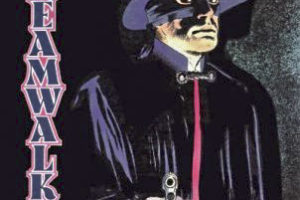
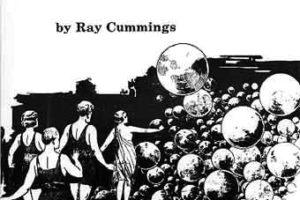
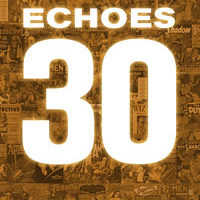
Your comments